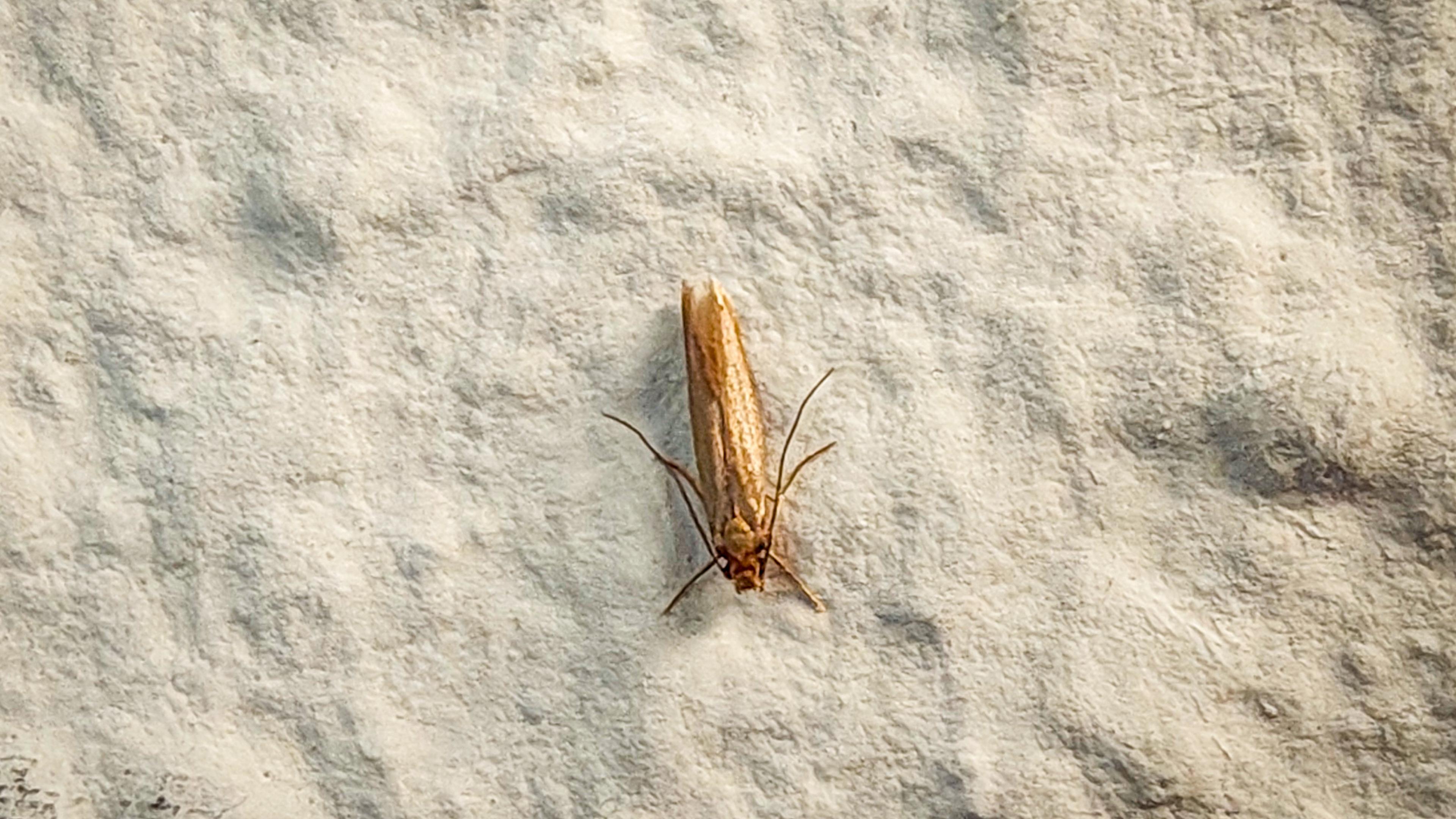Plants in the closet: get rid of clothing moths in the long term

Grandma’s beautiful silk towel would go well with the modern summer outfit. It still has to lie somewhere in the closet. But then comes the nasty surprise: dozens of small holes in the fabric make the cloth unusable – most likely the work of clothing moths.
« In the search for keratin from whom you feed, you attack textiles with animal fibers such as silk or wool. They also fly on animal hair and feathers, » explains René Rettig from the German professional association of housekeeping. Annoying! So how do you get rid of them again? The most important questions and answers.
Where do the clothes moths come from?
« Clothing moths live outside in nature. » There they feed on animal materials. « You get into the apartments through open windows and doors, » said Martin Claus from the German Pest Troat Association.
But there is another way to get into the house – via used textiles. « They are often introduced in finds from the flea market or second-hand products unnoticed, » explains Martin Claus.
Once there, you can affect the entire contents of the wardrobes. Worn textiles, blankets or untreated wool carpets that have not been moved or entered for a long time are preferred goals of textile moths.
But what exactly attracts clothes moths?
Clothing moths are not an indication that something in the house with hygiene is wrong. « Although they can perceive smells, such as sweat or food residues, they are normal in a household. That does not mean that you are unsanitary, » emphasizes Michèle Bandoly from the Federal Environment Agency.
Check regularly: You can see moth infestation with the help of a suitable pheromon trap. Photo: Andrea Warnecke/Dpa-Tmn
With all the trouble that the beautiful silk cloth or the valuable cashmere sweater can no longer be used, there is no need to panic when it comes to clothing moths. « You can get rid of them well and sustainably if you understand how they tick, » says Martin Claus.
Clothing moths therefore occur in four stages of development as:
« It is important to interrupt this development process so that the moths do not multiply, » explains Martin Claus. One should intervene at least in one of these stages to stop the development. « There are different approaches, » said the pest control.
How are clothing moths best fight?
The eggs can be effectively combated with living slip wasps. « They are natural enemies of the clothes moths and lay their eggs in the moth eggs, which die, » explains Michèle Bandoly. Don’t be surprised if you don’t see them – the beneficiaries are tiny, only about 0.4 millimeters tall.
It is important to use the right hatching wasps – i.e. for clothing moths. There are also some for food moths that you also combat. So you shouldn’t confuse either.
« The cards with the slip wasps are distributed in the closet. It takes some time for all moth eggs to be destroyed, » explains Michèle Bandoly. The cards should be renewed up to six times over a period of around four and a half months, he advises. Incidentally, residues of slip wasps are not to be feared, the animals are tiny. If you no longer find moth eggs, you die and decay into dust.
Wool particularly likes clothes moths – the best thing to do is pack textiles from natural materials in vacuum bags. Photo: Zacharie Scheurer/DPA-TMN
Adult clothing moths are about four to nine millimeters in size. The insects can be used with pheromone traps. « These are adhesive strips or leaves that are stuck with female attractants on which the males stick, » explains Martin Claus. « When the male animals die, the multiplication is interrupted at some point. »
Tip: René Rettig advises not only to place in one place, but attach them in the apartment.
What do experts advise when clothing moths have affected textiles?
If textiles were infected so much that they can no longer be saved, they should be disposed of in the trash immediately. « In the event of an infestation, it is advisable to clear out the entire wardrobe and examine each piece, » says René Rettig.
To make sure you wash all textiles – preferably as hot as possible. « The moths die off at washing temperatures of 50 to 60 degrees, » says René Rettig. If textiles do not tolerate as much heat, he advises: « Sensitive pieces made of natural materials, can alternatively be placed in the freezer at minus 18 degrees Celsius. »
Large parts, such as wool carpets that do not fit in the washing machine or the freezer, can also be put in the blazing sun for a few hours. « You should repeat that several times, » advises Michèle Bandoly. Alternatively, professional cleaning can help.
By the way: Wollen carpets are often equipped with insecticides (pyrethroids) against moth eating according to the UBA. This protection is, for example, a criterion of the « wool seal » for carpets.
Are chemicals a sensible solution?
Chemicals, for example biocidal products, such as they are advertised in the trade to combat insects, should be kept. « This is already in your own interest, because you can lead to health problems, » says Martin Claus.
« Wardrobes are mostly in the bedroom where people are for a long time. You don’t want to be exposed to the harmful effects of chemicals, » said the expert.
What helps so that the infestation does not come again?
In order to prevent another infestation, you should clean wardrobes, chests and other storage locations thoroughly. « There is a good effect on vinegar water, » says Michèle Bandoly.
Heat can also help to kill any existing eggs or larvae. « Especially joints and cracks can be treated with a hair dryer, » advises Michèle Bandoly.
How European companies proceed against fast fashion
« For safety, you should pack all textile with natural fibers after they have been cleaned and checked for remnants of infestation, packing in clothes boxes or airtight bags, » advises René Rettig. Summer or winter clothing in particular should be protected – and keep it safe after the respective season.
Tip: So that no new clothes moths move in, it is also advisable to attach a fine insect protection grille in front of the windows and doors.
Prevent clothing moths – do home remedies help?
Home remedies such as lavender oil or cedar wood only have a limited effect. They annoy the moths because they don’t like the fragrance. However, once the insects are there, the home remedies cannot prevent damage according to the UBA. René Rettig therefore advises: « Textiles with natural fibers that come into the house should be carefully examined for infestation before moving into their own wardrobe. »







